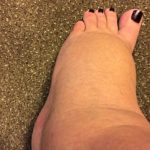Customers often make purchasing decisions by checking the name of the brand, or in some cases, the company’s logo. They unconditionally believe the product is genuine upon checking the company’s name or logo and forgo further inspection because they think that the companies have strong policies regarding trademarks, and the possibility of them being counterfeit items is slim. But the sad reality is that the counterfeit business is at an all-time high, and the companies who have the best counterfeiting protection still somehow fall victim to the process.
The Damage Caused By Counterfeits.
Counterfeiting is a global issue and has become an increasingly damaging practice to business owners worldwide. According to statistics, counterfeiting has taken away the jobs of nearly two and a half million people across the globe in the last two decades. The increase in the sales of fake items directly hinders the business of authentic companies. The loss of sales and revenue caused by the counterfeit causes companies to take huge losses, and then they balance it by firing employees.
It is observed that the counterfeit product makers’ target is usually the high-end businesses and fashion brands. Still, they pounce upon the well-selling items of small business owners as well. In these times, it is vital and necessary that every business owner, regardless of their operation size, should get their products and items trademarked. Counterfeit items have disturbed the customers because of the excellent resemblance present between the original and the copy. People can no longer distinguish between counterfeits and authentic products, and sometimes this results in them paying actual prices for copied products.
People can familiarize themselves with a few tips and traits which can help them to spot copied items easily.
Spotting Copied Items
The things which can help in determining whether an item is genuine or not are:
Details
When it comes to subtle detailing, the counterfeits are still somewhat lagging the genuine products. Details such as stitching and fine prints can never be replicated adequately by the counterfeit makers. When closely inspected, people will see that the real products have straight stitches, and the number of stitches in each inch is greater than the copied products. Copy items’ stitches are not perfectly straight and are less in number because such detailed work costs extra.
Buttons
Buttons are also a component through which counterfeit makers save cost and money. Copied items have low-quality buttons attached to them, which barely compliments the rest of the product. The buttons on such products are often made of plastic or some other cheap material, and the stitches on them are barely keeping them in place. The buttons used by international brands always contain their company’s logo or name, and they are stitched perfectly.
Zippers
Fashion accessories and bags always have some fastener attached, which can be used as a tell. Though the bags and accessories’ look can easily fool someone, when it comes to fasteners such as zips, the quality of copied items can become evident. Copied items’ fasteners are tacky and are made from light quality material, which can be detected upon close inspection. Fasteners used by international brands have proper finishing whose quality can be judged by a single use.
Apart from these traits, the counterfeits’ overall quality and fabric can also be used to separate them from the genuine items. If the material is labeled as leather and is giving off a shiny look, then it most certainly is not the thing it claims itself to be. The company name and logo placed on the copied items are also, most of the time, misspelled or misplaced, due to which it should also be closely checked. With the help of these traits and tells, people can become experts in separating the fakes from the real products.








